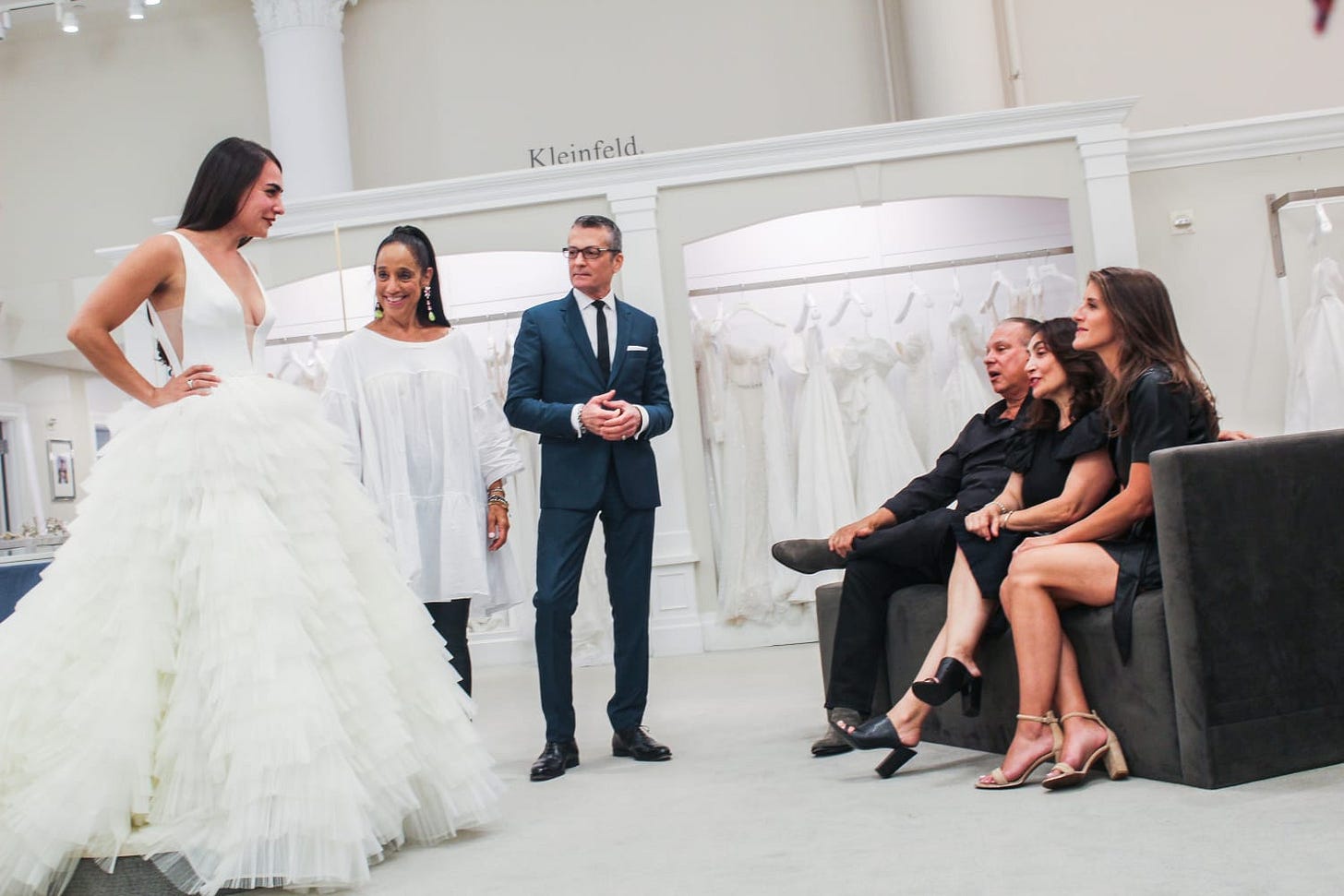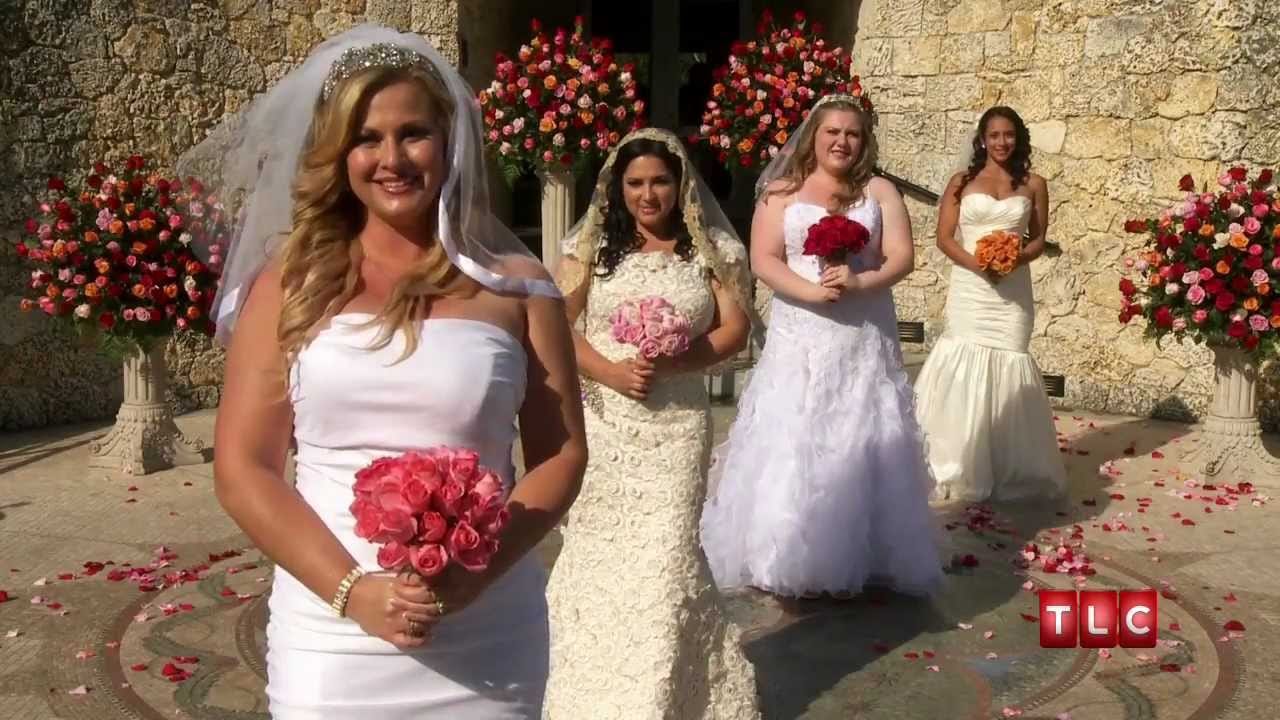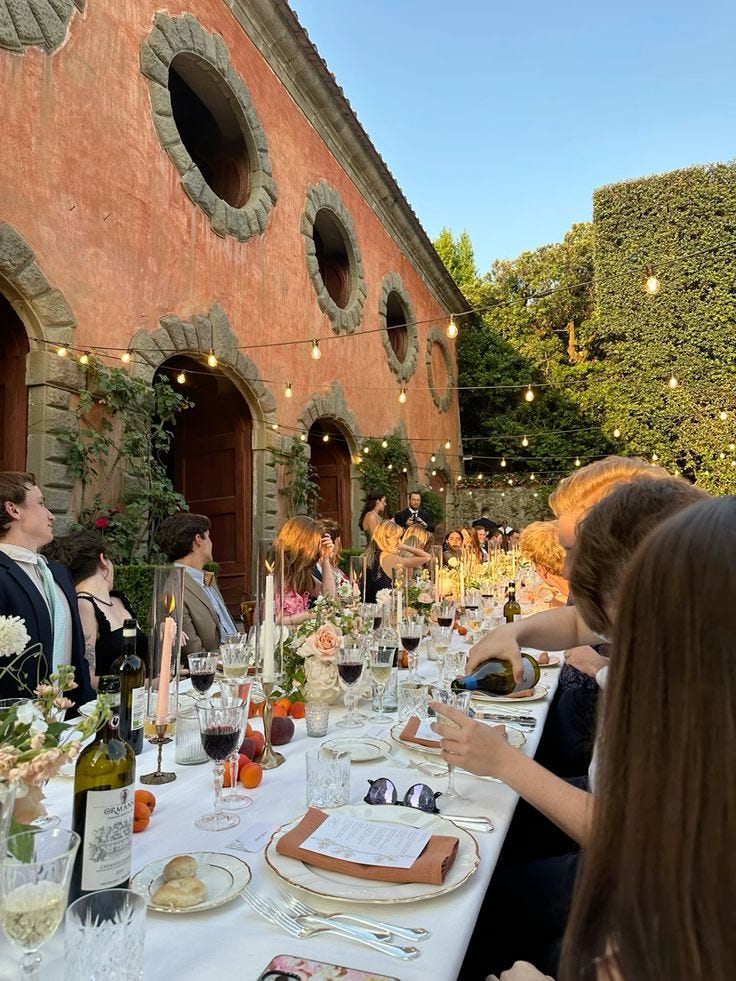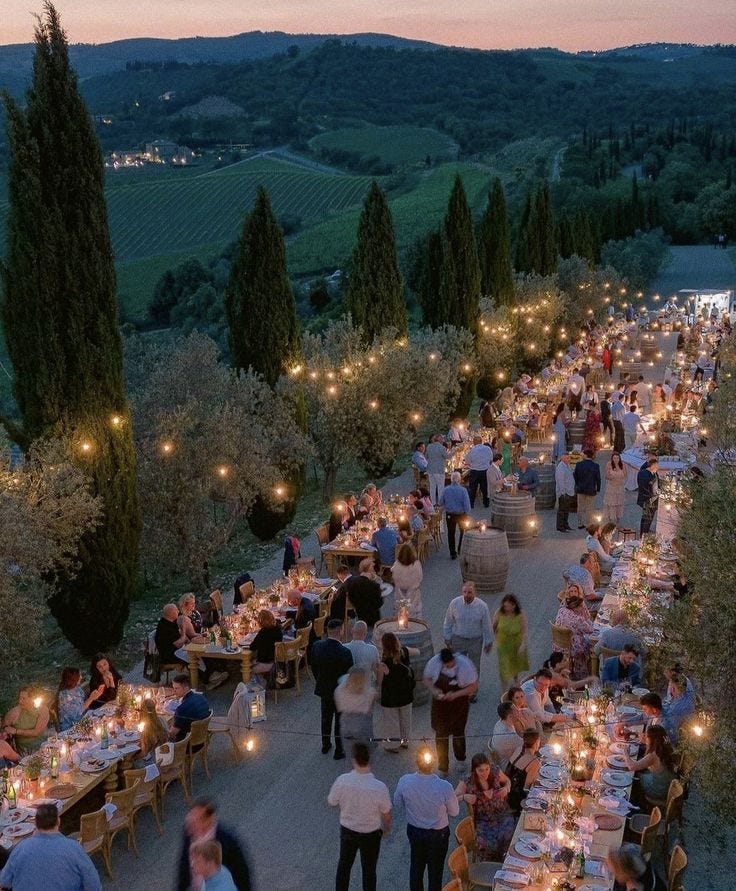When I was a little girl, my future was a black box that grew more opaque the closer I reached eighteen. Whenever I tried to envision myself as an adult, I could only ever see my mom, my face on her body, living in the same house, working the same job, and caring for the same kids. And whenever I pictured a wedding, it was her expired one with my dad - hair teased, shoulder pads raised, dress bedazzled in a Presbyterian church.
I cultivated the obsession with weddings that many young girls have - beginning, of course, with a fascination with wedding dresses. I became a serial viewer of TLC’s Say Yes to the Dress, particularly on sick days home from school. The reality program followed brides-to-be selecting wedding dresses at Kleinfeld, a luxury wedding dress boutique in New York City. Viewers witnessed the brides try on gowns of all styles and prices, navigating bodily insecurities and biting comments from their mother-in-laws. I developed a preference for ballgowns and A-line dresses - the kinds of gowns Disney-obsessed elementary schoolers tend to favor.
The obsession deepened with Four Weddings, which opened my mind to the copious wedding day considerations outside of the dress. Typically airing on TLC after SYTTD, Four Weddings was a reality, wedding-competition show, involving four brides attending each other’s weddings and ranking the other brides’ nuptials in various categories, including food, venue, dress, and overall experience. The bride whose wedding ranked the highest won a honeymoon vacation with her groom.
Notably, the weddings documented on Four Weddings were always tacky, typically containing the most obnoxious themes imaginable: Las Vegas, Alice in Wonderland, under-the-sea, you name it. All were outfitted with punny cocktails and papier-mâché decor - more prom-adjacent than wedding. Though the weddings and brides intentionally skewed unconventional, as most subjects of TLC shows do, they remain an interesting sample study of the American wedding and bride.
In the American imagination, the wedding is a highly personalized ceremony, designed to fulfill the particular dreams of the couple at its center. However, in the stereotyped American heterosexual couple, the woman is typically expected to have a stronger aesthetic eye and preference. Thus, the wedding - while focused on the couple - is conceived as more of a fulfillment and reflection of her dreams, in most cases, than the groom’s.
A wedding is one of the first opportunities an American woman has to realize and exact her sole aesthetic vision, at least at that large of a scale. It’s expected to be one of the largest life events wherein attention and decision-making power rest largely on her shoulders. A moment for her to harness complete control. Whatever she says and wants goes, without a say from anyone else, even if her taste leaves something to be desired. Whether the ceremony is a Pinterest vision of rolling Italian hills and dripping candelabras or the realization of a childhood fantasy (Disneyland weddings start at $15,000), guests are expected to take to the festivities with high spirits and open hearts (and wallets).
At twenty-four, I’ve only been to three weddings in my life so far - all for older relatives, all years spaced apart. However, my friends who are two to three years older than me have made it quite clear that I am on the precipice of an inundation - a roller coaster steadily climbing before its drop. I’m told to enjoy my summers now, because in the years to come, they will be booked to the brim with weddings of my friends and my partners’ friends. I tell them that most of my friends are single, and they tell me to “just wait.” I tell them that I’m excited to attend more weddings and they’re quick to temper my expectations. Flights, lodging, paid time off, fraternizing with people you don’t want to - these are among the most costly expenses a wedding guest is expected to pay.
My friends’ pockets are suffering. Particularly friends who are a part of close-knit friend groups, such as former sororities and fraternities, where the group’s members are timing their getting married and having children so that all the friends’ milestones occur in quick succession (but never overlap). Such a phenomenon causes surges in expenditure, particularly around the summer months, especially for those in the bridal party itself.
These days, one of the wedding guests’ heftiest expenses is simply getting to the event. In 2024, David Mack wrote about “The Rise of the Random Destination Wedding” for The Cut. In 2023, people spent over $28 billion on destination weddings, which is up $7 billion from the prior year. According to Research and Markets, the most popular reported reason for choosing an alternate country for a destination wedding is that the location is “interesting.” Over the last ten years in the wedding planning business, Pamela Goldman, co-owner of the travel wedding agency Wedaways, has noticed that, nowadays, more brides and grooms express the desire to provide their guests with an “experience,” rather than just throw a party.
All of this is corroborated by what I’m seeing on my personal social media feed. Over the last decade or so - since Kimye’s wedding, really - every other person is getting married in Tuscany. A Tuscan vineyard wedding is to the 2020s what a beach wedding was to the 2000s. The difference is that Tuscany (or the Spanish countryside or the south of France or a Grecian island) is quite complicated and quite expensive for Americans to get to, involving not only a flight across the Atlantic, but a rental car to trek out to the countryside, and a room in a villa. Sand beaches in Florida, California, and even Hawaii are far simpler.
But simplicity isn’t what these American newlyweds-to-be are after. They’re not after the feeling of local ties - The Cut reports that those throwing a destination wedding often have little connection to the destination in question. They are after a memorable experience, even if it means alienating some less well-off or less mobile guests from RSVP-ing YES in the process.
Some might suggest that this desire is fueled by a need to boast on social media, a modern version of keeping up with the Joneses. I’d argue, as I often do, that social media isn’t necessarily creating this desire, but amplifying it - creating a wider crack in the glass through which we can peer through. The pressure is much more visual. Instagram is like a modern version of Four Weddings - a vehicle for comparison without the honeymoon prize.
The way that social media has affected the rollout of a wedding has been especially on my mind as of late. Hypothetically, the idea of getting engaged feels less stressful to me than the idea of posting about getting engaged. The social script of posting - about the engagement, the engagement party, the bridal shower, the bachelorette party, the ceremony, the reception, and the honeymoon - has become a regular part of the American wedding canon. The photos all occupy a similar form - the bride at the center, her hair perfectly highlighted, in various white ensembles, surrounded by smiling friends and family. Her hand on her fiancé’s chest in a field of wheat, wearing tones of beige. Her in a white bikini and “Bride” sash, drinking a mojito on the sands of Cabo or poolside in Vegas. The composition of such posts are different than what I usually share on social media, but the idea of undergoing the process of getting married without such posts almost makes something feel missing.
Perhaps the increased extravagance - the far-off destinations, the perfectly timed Instagram rollout - is a conscious or subconscious means of winning the social comparison war. Perhaps it’s a genuine attempt to provide friends and family with an opportunity to travel somewhere they otherwise wouldn’t. Perhaps it’s a concerted effort to make what’s supposed to be the most special day of your life truly feel that special, by drunk dancing on faraway cobblestones with the people who have led you to this point and depicting that specialness online. Who wouldn’t want to celebrate their love in the most beautiful place in the world and share the images of it with said world?
Thinking about the current exuberant state of weddings has me quick to wonder about how weddings once were - what they once represented and what they still represent. They were business deals. Matters of economics. Means of exchanging currency, property for women, and vice versa. Unromantic and unglamorous. But they were also the preamble to starting a family - a family that would be recognized by God. A wedding was a christening, imbued with the same significance as birth and death. It was a passageway. A portal to a new life. A baptism.
America is a heterogeneous nation, un-uniform in its piousness. America - like the American wedding and like the American bride - is a highly individual project. A dogged country with inhabitants so committed to their belief in exceptionalism and self-righteousness that they’re unafraid to fracture community in the process of proving it.
I’d venture to guess that those with the funds to skip across the pond to get married are of the liberal coastal variety, and that they’re doing so out of this desire to be, in some way, cleansed - or better put, have their nuptials made righteous. Elevate them, ordain them with an immovable seal. Perhaps the only way secular, nomadic Americans know how to heighten their nuptials to “God’s” proverbial gaze is to do what Americans do best: spend copious amounts of money.

The critic in me likens the modern far-off, random destination wedding to the modern zillennial birthday party, in that there are often highly charged feelings of self-indulgence at the center of either situation. Both circumstances illustrate the inward-looking lens through which millennials and Gen Z often peer. But, of course, the hopeless romantic in me understands and even cosigns the desire to celebrate loudly. That side of me looks forward to globetrotting in the name of love in the years to come. I’ll begin saving now.










I’ve been married for 15 years. We got married at SF City Hall, and used the savings on the venue to pay for airfare and hotels for all of our guests, so nobody had to spend a dime. It was an unconventional approach, but the ceremony was beautiful and we have very sweet memories of the day, including friends and family who could not have made it otherwise. I think it is important to plan a wedding that is going to align most with your values.
Almost all the weddings I went to in my 20s ended in divorce. It was great to get married myself for the first time at 42; there was virtually no pressure (family or social) to do things any certain way but what was right for us.